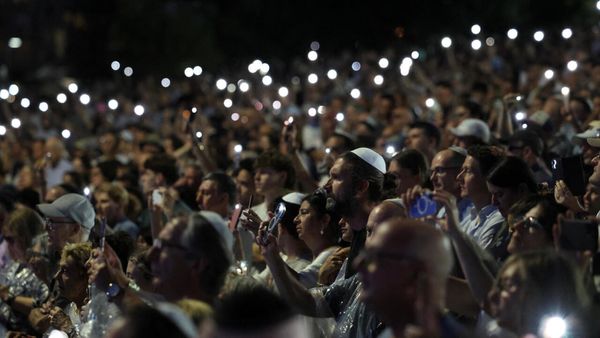Sandhya Kumari, 18, squats amid an assortment of buckets, gazing at the tap boisterously filling up a pitcher. It has been two days since it sputtered to life. She wonders what she’ll do with the free time — the prospects are tempting. Maybe an extra hour of Facebook, gossip with her neighbours, and who knows, a leisurely stroll in the fields?
Four months ago, Kumari, who lives in Shivhar village in Mahoba district, Uttar Pradesh, had a different routine. Filling up water for drinking and cooking meant numerous trips between the neighbourhood tube well and her kitchen courtyard, where the plastic water cans lie. “On a good day, when there isn’t too long a queue and the pump works, without too much effort on my part, the chore can take up most of my morning,” she says. Kumari can’t remember spending a day differently. As the oldest girl child in her household of seven, this responsibility was ‘naturally’ entrusted to her.
The installation of a tap in her house this year, along with 250 other households in Shivhar, has marked 2023 as an eventful year in the village. It’s the first time that every villager can turn on a fixture within their premises, without pumping for it. All of it for free.
In the last six months, the Jal Shakti Ministry’s ₹3.6-trillion Har Ghar Jal initiative, which aims to take piped, potable water to every rural household in India under its flagship Jal Jeevan Mission, has provided an hour or two of running water every morning, to Kumari and others in Shivhar.
Of India’s 19.3 crore rural households, only 3.2 crore had tap water connections in August 2019. In Mahoba, the penetration of taps that year was 1,612 households, just 1.2% of the population, as per the records of the Jal Shakti Ministry. Today, it is 97.5%.

That year on Independence Day, Prime Minister Narendra Modi proclaimed from the ramparts of Delhi’s Red Fort that piped water would reach every house in every village by 2024. As of September 2023, the dashboard of the Har Ghar Jal initiative — and several of the Centre’s publicity portals — claims 13 crore households, or about 67% of the targeted households, have been provided with water connections. Nearly 1.5 crore of these are in Uttar Pradesh.
But Kumari is still not used to the ease of the tap’s flow. She remembers the truly difficult days, when the hand pump’s ruts would give way or it would clog and become useless, until the plumber from three villages away would deign to undertake an “inspection”.
This would usually mean a walk to a neighbour’s house a few hundred metres away or to the adjoining gully via a dirt track, to one of the other functioning hand pumps. Sometimes though, she’d need to trek to the well half a kilometre away, many times over, balancing a pyramid of pails. In Bundelkhand region’s extreme weather, with temperatures reaching as high as 48 degrees Celsius, this was hard, especially since it was a job she did alone.

Hand-holding
Groundwater is overwhelmingly the mode of choice for both agriculture and drinking in India, with 94% of all irrigation and 85% of drinking water needs sourced through groundwater. This means that hand pumps — the crucial link in the chain — are critical to rural lives. Uttar Pradesh, according to this year’s Minor Irrigation Census report, accounts for the maximum number of tube wells, borewells, and dug-wells in India.
In Bundelkhand, which includes districts such as Jhansi, Banda, and Mahoba, the sub-surface is mostly rock. Rainwater cannot percolate deep enough to form perennial, inexhaustible aquifers that can be relied on during periods of sparse rainfall, like in the northern and more alluvial parts of Uttar Pradesh. Historically, the districts here have struggled with access to water, with women frequently having to walk miles to draw water from wells.
Hand pumps, thus, occupy a special place in the rural imagination, especially since the 1970s. While they might seem like rudimentary contraptions, getting them to work efficiently in India’s varying geological conditions has been a daunting challenge. They also need to be affordable and rugged enough to handle overuse.
In the 1970s, an investigation by the United Nations International Children’s Emergency Fund (UNICEF), a non-profit set up in 1946, found that nearly three-fourths of the installed hand pumps in India weren’t working. This was because the designs were based on American-use conditions and small families. In India, where a single hand pump was often used by an entire village for household needs and agricultural operations, they were unable to cope with the wear and tear. The machines wore down rapidly, leaving them defunct for long stretches.
It finally took the ingenuity of the late Swedish engineer, Oscar Carlsson, who spent years in Solapur, Maharashtra, with the Mission Covenant Church of Sweden and the Hindustani Covenant Church to invent the ‘Sholapur pump’.
This pump formed the basis of a collaborative programme involving the government, the World Health Organization, and UNICEF, which yielded the India Mark-2 hand pump, arguably the most popular design in the world. Being free of intellectual property restrictions, it is made by several manufacturers today and they supply locally as well as to several African countries.

Tapping in
“During elections, it’s routine for governments to announce schemes for installing hand pumps or transfer funds to panchayats to mend defunct pumps,” says B.N. Singh, a Mahoba-based businessman, who deals in water storage equipment.
The Rashtriya Lok Dal, formed by the late Chaudhary Ajit Singh, which boasts a significant presence in Uttar Pradesh, has a hand pump as its party symbol. With falling water tables, electric submersible pumps increasingly power water extraction in India’s villages.
Domestic hand pumps that cost between ₹3,000 and ₹10,000 are best suited to extract water from shallower depths of up to 30 metres. They are still the mainstay of hundreds of thousands of villages across India.
“The aim of the Har Ghar Jal initiative ultimately is to be able to make the hand pump obsolete,” a senior official of the Jal Shakti Ministry told The Hindu. “Previously, all rural drinking water schemes primarily aspired to supply hand pumps. We are taking a step further.”
Besides making women’s lives easier, piped water connections also mean reducing individual dependence on groundwater. Recent estimates from the Central Groundwater Board of India pegs about 20% of the country’s groundwater blocks being “critical” or “overexploited”. Uttar Pradesh has 13% of such blocks.
While providing households with tap connections is the visible front end of the scheme, at the heart of the operation to bypass hand pumps are multi-crore water treatment plants. These have, under the aegis of the Jal Jeevan Mission, sprouted in nearly every district of the State.

Slow fixes
Gorkha village, in the Chakheri block of Mahoba, which comprises about 500 households, has in the past year seen hundreds of houses fitted with tap connections. Situated near Arjun Sagar dam — which is among the five major reservoirs in the district — the village hosts a sprawling water treatment plant, purportedly posing an existential threat to the hand pump.
Raw, untreated water flows from the dam 5 km away and passes multiple stages of filtration. Chlorine is added at different steps of the treatment and this water is pumped up to an overhead tank, about seven storeys high. From here, water — about 25 million litres a day — makes its way to 80 villages or about 27,000 households.
However, several villagers complain that the water isn’t actually getting into their houses. “My house is at an elevation. Those who live lower down say they occasionally get water. But I can’t afford a [submersible] pump. So, this water isn’t reaching my house,” Sushil, who goes by a single name, says. Others say the water is “too salty”.
The plant’s project manager, Sri Shanmugham, says that “most houses” had been provided with a piped water connection, but there were shutdowns in supply when maintenance works were undertaken. “In the next two months, the water supply will be continuous. We faced some delays in establishing the pipe network to draw water into the treatment plant,” he says.
A major challenge transporting water to villages sprawled across hundreds of kilometres is leakage. Often, identifying and fixing these points means supply must be halted for everyone.

Water wonder
Like the treatment plant in Gorkha, four other such plants are in various stages of commission in Mahoba. They aim to provide piped water to nearly 6.6 lakh households in the district, with ₹10,000 crore already spent on these schemes. District officials say that all of these are expected to be running smoothly by 2024.
Despite taps being a visible presence in Mahoba, hand pumps are unlikely to be a relic of the past anytime soon. This is because despite assurances that water streaming into their houses is treated, several villagers believe that water pumped from the ground “tastes better”.
In Kanery village of Mahoba, for instance, Vir Singh says several residents got tap connections in their houses, but the “chlorinated” taste of the water meant that he and his family utilised the piped water only for washing, bathing, and water for the cattle. “For drinking, we will draw water with the hand pump. That’s what’s best for us.”
Unlike in cities and urban settlements where pumped water is stored in tanks, most of the villages with new tap connections don’t have centralised or even individual storage tanks. Water is still viewed as an ephemeral utility that comes and goes at its own pleasure.
State government officials say that every water treatment plant has on site a laboratory that continuously monitors water quality. “Generally, the groundwater here is fairly salty and that’s what people are used to,” says Bhagwati Sahu, an engineer at another water treatment plant in the district. “It will be a while before people actually accept piped water as suitable for drinking.”
Kumari, while acknowledging that piped water has eased household drudgery, says no one from her family actually drinks water from the tap. “Sometimes it can be muddy; sometimes clear. The tap may come and go, but when we run out of water, we can always go to the hand pump,” she says.







